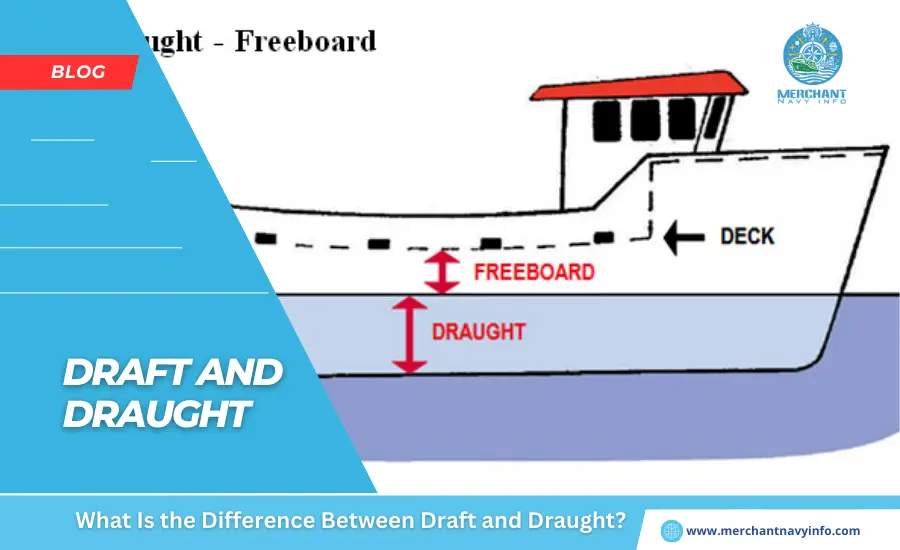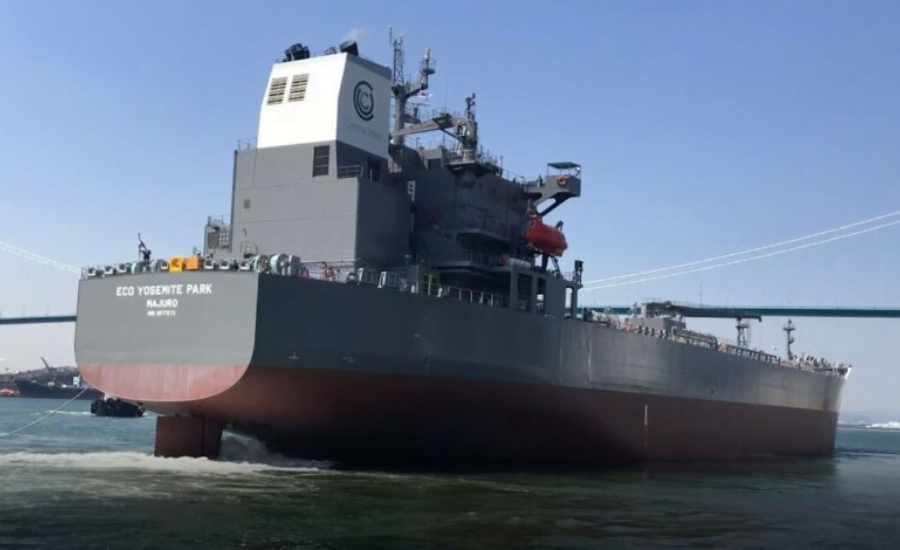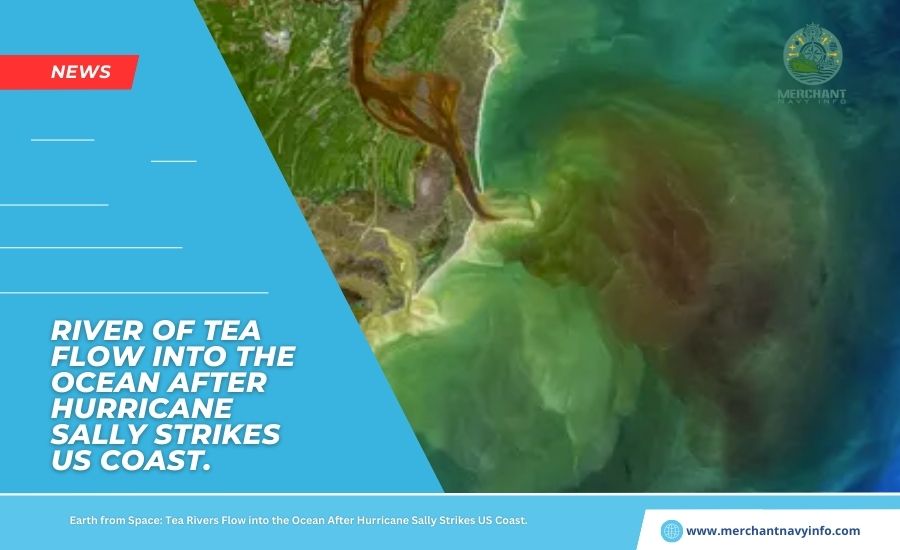
A ship’s draft (draft in American notation, draft in British notation) is one of the principal dimensions of a ship. And is technically defined as the distance between the Ship’s keel and the Ship’s waterline. A ship’s keel is the lowest longitudinal member that helps form the Ship’s structure. And the float’s waterline is the point on the Ship’s hull where the air-water interface occurs. The difference between the overall height of a ship. And its draft is called the freeboard and is measured from the waterline to the upper deck. Simply put, the combined height of the draft and freeboard is the same as the height of the Ship.
In addition to the vessel’s length (denoted as Lpp or length between vertical lines). And width (denoted as B), the draft (denoted as T) defines both the vessel’s stability and the permissible load. It is an important physical quantity. There are no harmful effects when stored on board. The draft of most ships varies longitudinally from bow to stern. Resulting in a change in draft along the length of the Ship. Therefore, to accurately indicate the draft of a particular boat or Ship. It is necessary to indicate where the draft was measured or whether the Ship has a uniform keel when floating. This is particularly important when assessing the entry restrictions for each vessel. As ports are always located in relatively shallow waters compared to the surrounding area.
Importance of a Ship’s Draft
Reading the draft is done is important to ensure a safe balance between the maximum load. That can be carried on board and the point at which the Ship becomes unstable. Ship owners and operators strive to maximize onboard capacity so that their passenger. And container ships can operate profitably, transporting the maximum amount of cargo in as few round trips as possible. It also takes into account weather conditions and changes in the physical. And chemical properties of water bodies along the migration route.
Bonjean Curves and Shape Factors
Another important use of ship drafts is the calculation of Bonjean curves and certain shape factors. The blocking factor (measures how full the Ship is compared to the surrounding cuboid). And the vertical prism factor (how full the Ship is compared to a prism with the same height as the draft and the same cross-section). Measuring shape factors (such as water surface area) can help evaluate a particular ship’s shape, shape, and associated hydrodynamic values.
These are dimensionless quantities that are important for the theoretical study of the performance of ships during navigation. The block coefficient, abbreviated as C(B), is given by:
C(B) = (submerged volume) / (ship length x width x draft).
The length given here refers to the length between ships. The stern and stern and front are vertical.
C(B) values range from 1 for barges to 0.45 for high-speed vehicles.
The typical range of these values varies depending on the supplier and vessel manufacturer.
Similarly, the vertical prism coefficient, abbreviated C(P), is given by:
C(VP) = (Seafloor volume) / (Water surface area x Ship’s draft)
Water surface area is the enclosed area at the waterline of a ship. C(VP) typically ranges from 0.99 for inland waterway vessels to 0.76 for certain bulk carriers to 0.39 for Type high-speed vessels crafts.
For both coefficients, the draft plays an important role in evaluating the shape of the Ship. Again, the general range varies by manufacturer and source.
A Bonjean curve refers to a set of graphical measurements that correlate multiple quantities with a ship’s draft. In particular, the cross-sectional area and moments about the baseline are recorded and measured.
How to read a ship’s draft?
Draft measurements are made by evaluating a draft gauge painted on the side of the Ship, usually near the stern. Marks and standard codes are written in the form of an enlarged ruler. For larger ships and vessels, draft readings can be painted. In several locations for easy access by crew and service personnel.
For example, most bulk carriers and tankers have six visible draft dimensions:
forward port, forward starboard, midport, midstarboard, aft port, and aft starboard. Forward of a ship refers to the forward end, stern refers to the stern. And amidships refers to the exact midpoint of the Ship’s length.
Port and starboard refer to the left and right sides of a ship. As seen from the forward stern or forward direction of the Ship. One of the reasons for implementing draft measures at several points on the port. And starboard sides of a ship is to determine if the Ship has an inherent heel. The draft is also measured at the bow and stern to determine if the vessel has its own trim.
Ship Draft Calculations
Under ideal conditions, a ship’s draft can be calculated simply by measuring the draft gauge painted on the hull. In such a situation, the draft remains constant over the entire length of the Ship.
However, in actual operating conditions, a vessel may be loaded asymmetrically in both length and width due to various parameters based on the judgment of the shipowner, operator, engineer, and master. This uneven loading causes the vessel to pitch fore-aft (called trim) or pitch side-to-side (called lol), causing different draft values to appear when the gauges are checked at different points.
In such cases, it is important to know the overall heel of the vessel to ensure the stability of both the vessel and the packed cargo. Cargo slipping or unraveling within the cargo area can result in property damage and personal injury.
The slope based on the draft value can be calculated as follows:
Heel angle (degrees) = arctan [| (port draft) – (starboard draft) |] / (required width) Pitch angle (in degrees) = arctan [| (bow draft) – (stern draft) | ] / (required length)
In this formula, arctangent refers to the reciprocal of the tangent (often called tan-1) of a trigonometric function. Required breadth refers to the width of the Ship when standing horizontally upright in the holds or on deck for which the required list is to be calculated.
The breadth usually considered is the breadth of the upper deck, which is one of the standard principal dimensions of all ships.
What is a draft survey?
Draft survey refers to a study or calculation that uses measurements of a ship’s draft, with the primary purpose of determining the Ship’s weight based on all loading conditions. This is achieved by making extensive use of the vessel’s draft values and dimensions in these surveys, either from the stability manual or from physical measurements of dimensions drawn on the side of the vessel.
The weight of any ship’s cargo can be calculated by using existing knowledge about the Ship’s geometry from manuals and documents in combination with Archimedes’ floating body principle. According to Archimedes’ principle, the weight of an object floating in water is supported by the volume of water it displaces.
Essentially, we can write:
Weight of the Ship (kg) = (volume of water displaced by the Ship (m3)) x (density of the water in which the Ship is currently located ( kg.m-3)).
Furthermore, the volume of water displaced by a ship on the water is numerically equal to the volume of the Ship submerged in the water. Volume in water can be calculated using the Bonjean curve.
Therefore, the equation for the weight of the Ship can be rewritten as: Weight of the Ship (kg) = (submerged volume of the Ship (m3)) x (density of the water in which the Ship is currently located (kg) .m-3) The density of water depends on several parameters. It varies depending on the location. Therefore, it is important to carefully measure the density at each location when calculating weight.
If we know the weight of the Ship at a particular point in time, we can calculate the weight of the cargo on board as follows: Cargo weight in tons = (cargo weight). Loaded Vessel (Tons) – (Empty Vessel Weight (Tons)) Tonnes are a common unit of weight for large bulk carriers and tankers. Density varies from location to location, so it is important to measure empty and loaded containers at the same location rather than at different locations.
Conclusion
Thus, it can be seen that the draft of a ship plays an important role not only in evaluating the stability and shape of the Ship but also in draft surveys and other useful calculations. The most important points to keep in mind when checking the draft of a vessel are that the draft can vary along its length, that the draft can vary under certain conditions depending on the type of water body; Draft affects the heel angle, and draft affects the heel of the Ship. Gradient has a weight calculation.










